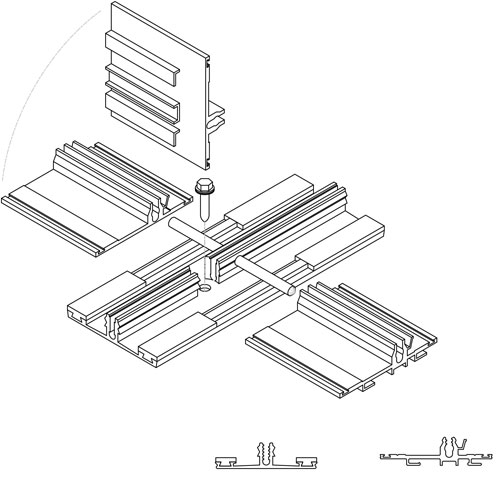Translucent Cellular Polycarbonate Delivers Design Versatility
Designing the Frame
With their knowledge of dies and extrusion processes, many PCSS fabricators or integrators are well positioned to offer advice regarding extruded aluminum framing and gasketing and the engineering of systems.
Experienced manufacturers incorporate three features into every framing system: deep channels (known in the industry as “rabbets”) in the framing to accept expansion; gaskets with low friction surfaces to minimize wear (and noise) resulting from expansion and contraction; and, to compensate for soft PCSS surfaces, controlled gasket pressure. This is accomplished by rigidly spacing the framing at a specific distance apart on each side of each PCSS panel.
 |
In this example of proper framing for PCSS architectural systems, the plastic spacer acts as a thermal break and also limits how tightly the gasketing will press against the panel. This is known as "controlled gasket pressure." Image courtesy of EXTECH/Exterior Technologies, Inc |
 |
This is an example of a sophisticated system wherein the vertical and horizontal framing members are joined by a single stainless steel pin. However, the principle of lapping framing members can be employed with more conventional systems also. Overlapping joints, as shown in this example, give superior strength and weathertightness. Image courtesy of EXTECH/Exterior Technologies, Inc |
 |
This is the same system as shown in the exploded view, now shown assembled. The ability to overlap framing members was made possible by the use of two different thicknesses of gasketing. Image courtesy of EXTECH/Exterior Technologies, Inc |









